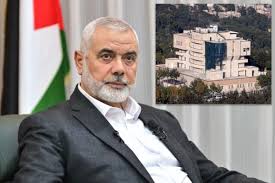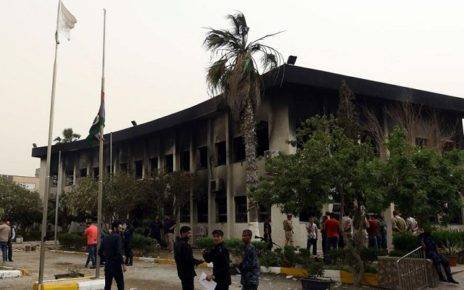In a shocking and meticulously planned assassination, Ismail Haniyeh, a top leader of Hamas, was killed by an explosive device smuggled into a Tehran guesthouse. The incident, which occurred on Wednesday, has sent shockwaves through the Middle East, with serious implications for regional stability.
Haniyeh was in Iran for the presidential inauguration when the bomb, hidden in the guesthouse for approximately two months, was remotely detonated. The guesthouse, part of a large compound known as Neshat and heavily guarded by the Islamic Revolutionary Guards Corps (IRGC), was thought to be secure. However, the blast, which also killed a bodyguard, revealed a significant breach in the compound’s defenses.
According to a detailed investigation by The New York Times, the bomb had been placed in Haniyeh’s room well in advance, awaiting the moment when his presence was confirmed. This level of infiltration indicates a severe intelligence failure for Iran, particularly for the IRGC, which manages the compound for high-profile guests and sensitive meetings.
Speculation initially suggested an Israeli missile strike, echoing previous incidents where Israel’s advanced military capabilities breached Iranian defenses. However, this time, the method was different. By planting a bomb, the assassins exploited a lapse in the internal security of a supposedly impenetrable complex. This tactic highlights a new dimension in the ongoing shadow war between Israel and its adversaries.
Iranian and Hamas officials quickly pointed fingers at Israel, an accusation supported by several US officials who also requested anonymity. While Israel has not officially claimed responsibility, Israeli intelligence reportedly briefed the United States and other Western governments on the operation’s details immediately after the incident.
The assassination of Haniyeh, a key negotiator in cease-fire talks, threatens to derail ongoing efforts to end the war in Gaza. His death may trigger a fresh wave of violence, complicating diplomatic efforts in the region.
The blast, which occurred around 2 a.m. local time, caused substantial damage to the building, shattering windows and partially collapsing an exterior wall. The compound’s medical team was quick to respond but found Haniyeh and his bodyguard already deceased. Notably, Ziyad al-Nakhalah, leader of the Palestinian Islamic Jihad, was staying next door but was unharmed, underscoring the precision of the attack.
The method of the assassination has stirred controversy and speculation in Iran. Some reports suggested a missile strike, but the IRGC confirmed the bomb had been placed inside the room. This incident draws parallels to Israel’s assassination of Iran’s top nuclear scientist, Mohsen Fakhrizadeh, in 2020 using a remote-controlled weapon.
Mossad, Israel’s foreign intelligence service, is believed to have orchestrated the operation. David Barnea, Mossad’s chief, has been vocal about targeting Hamas leaders, emphasizing a long-term commitment to bringing those responsible for attacks on Israel to justice.
In the aftermath of the explosion, Iranian officials, including Gen. Ismail Ghaani of the Quds Force, promptly notified Supreme Leader Ayatollah Ali Khamenei. By dawn, Khamenei had convened an emergency meeting with the Supreme National Security Council, ordering retaliatory measures against Israel.
Haniyeh’s assassination, amidst heightened security for Iran’s presidential inauguration, marks a significant escalation in the covert operations between Israel and its adversaries. It underscores the vulnerabilities even in the most secure locations and the lengths to which intelligence agencies will go to achieve their objectives.
This incident not only destabilizes the region but also brings into sharp focus the ongoing covert warfare and the complex geopolitics of the Middle East. As the ramifications unfold, the international community watches closely, bracing for potential escalations.





